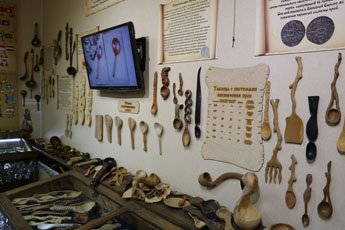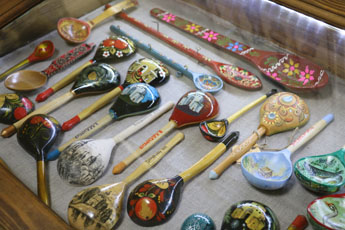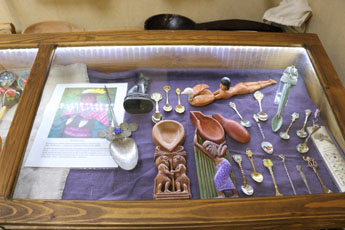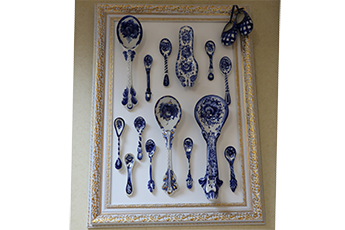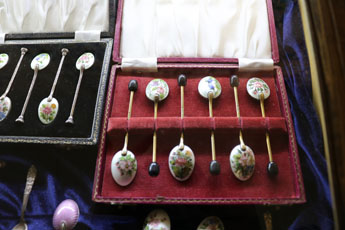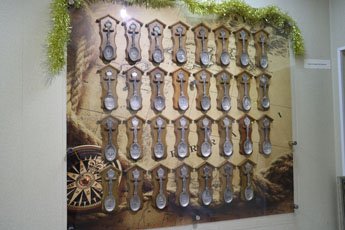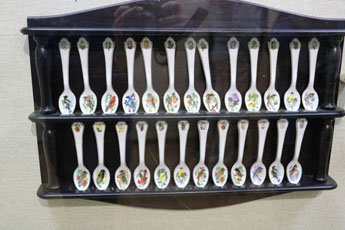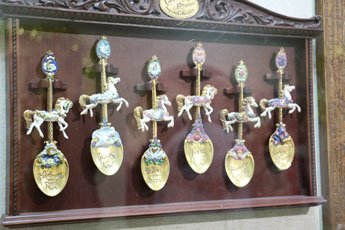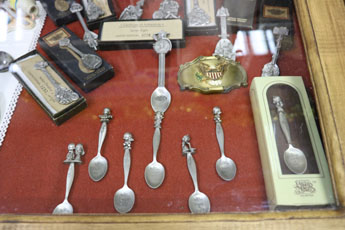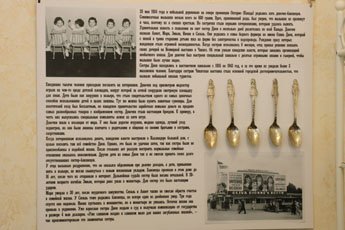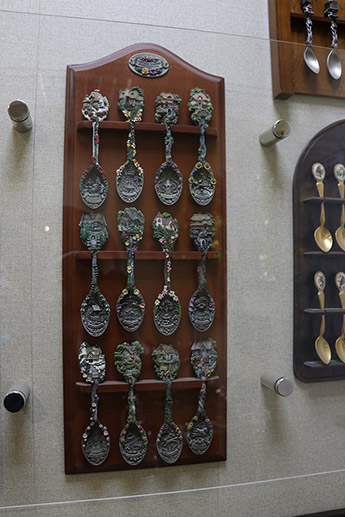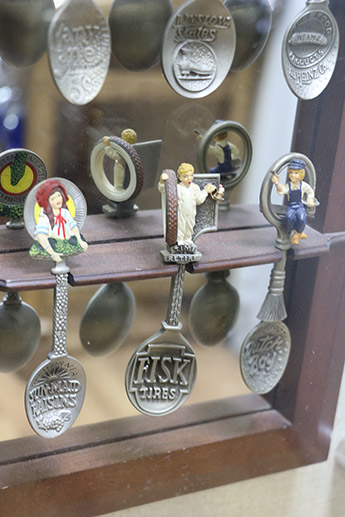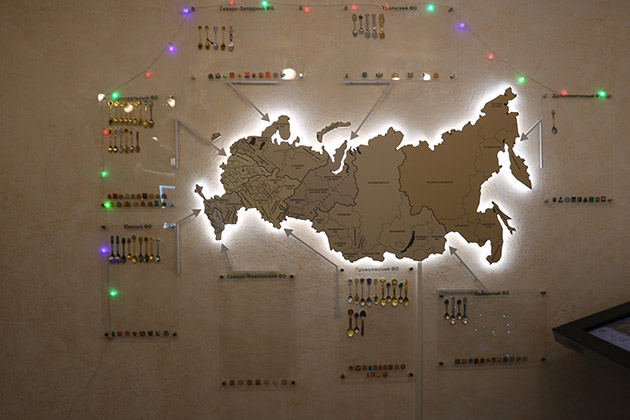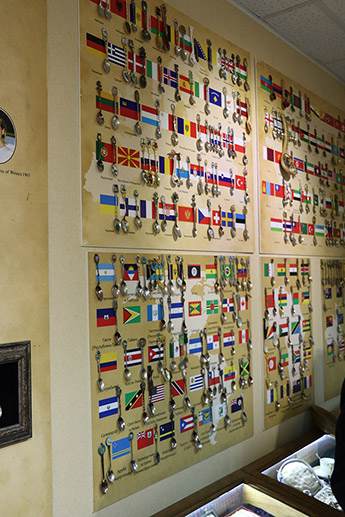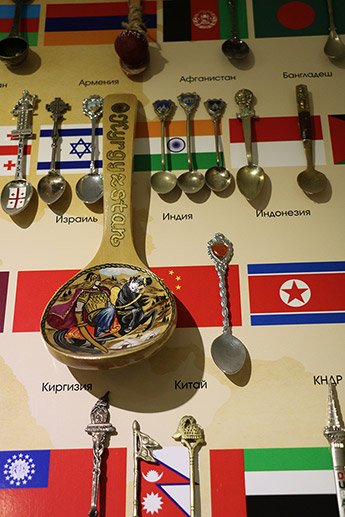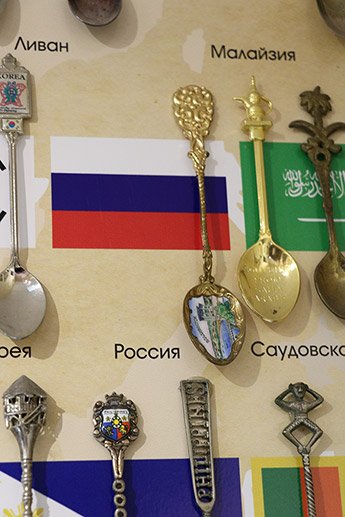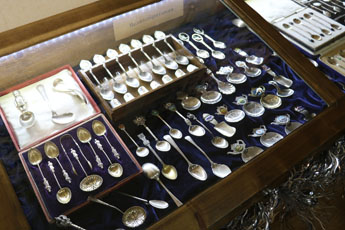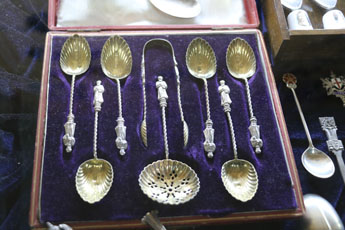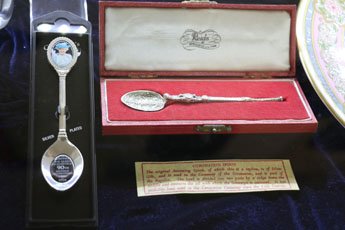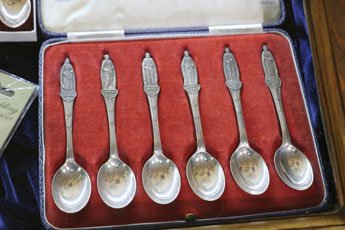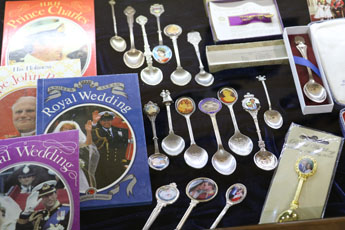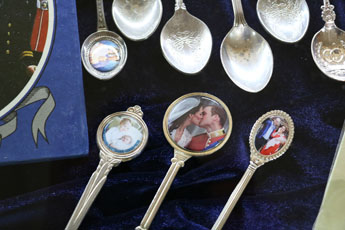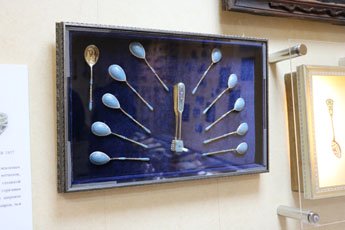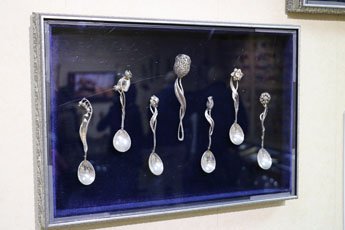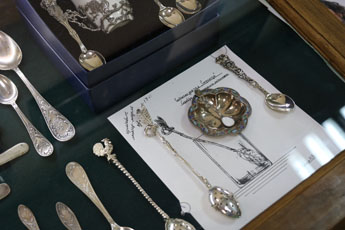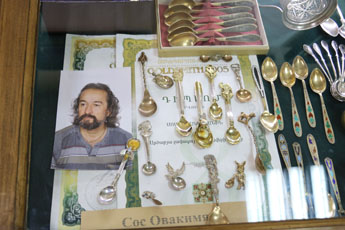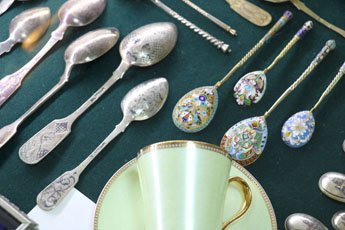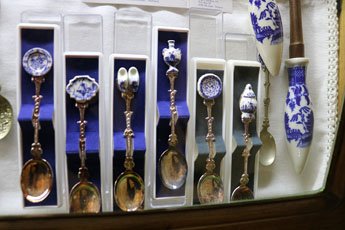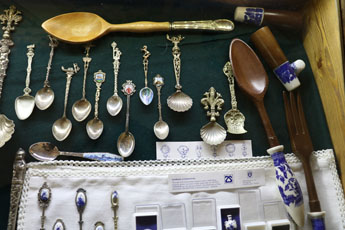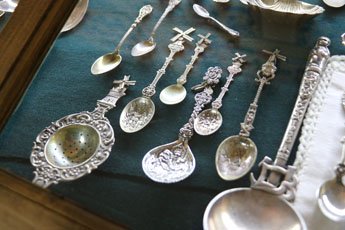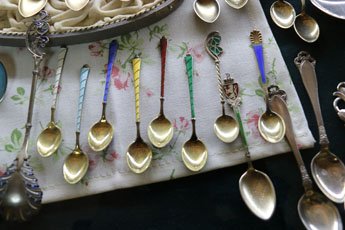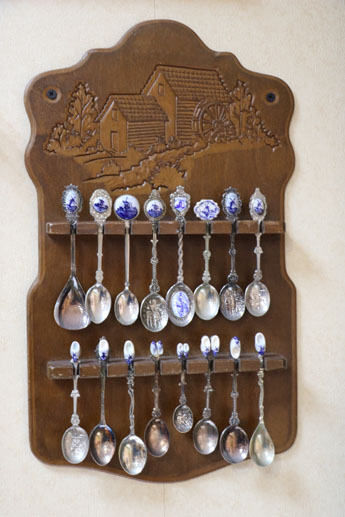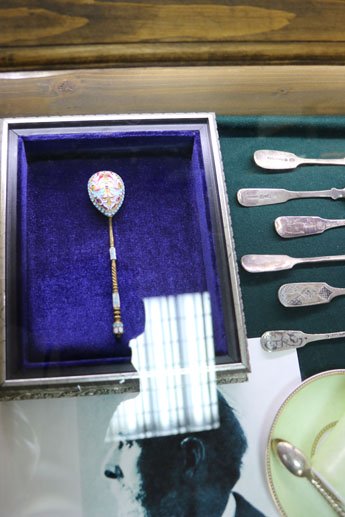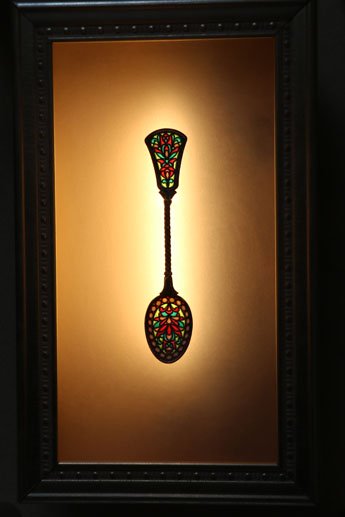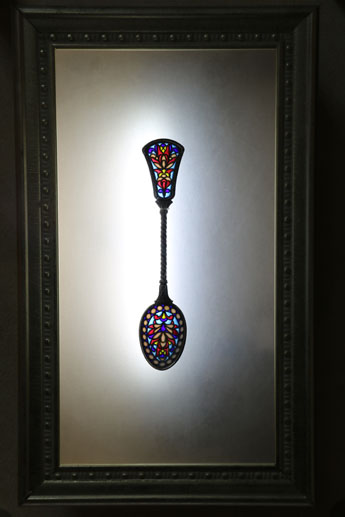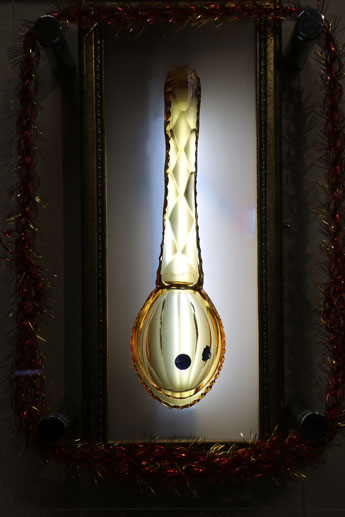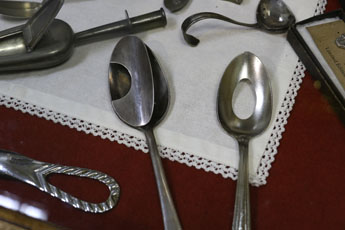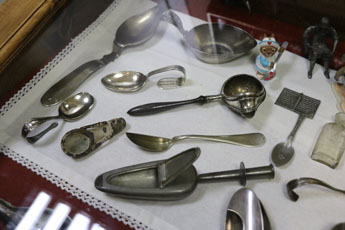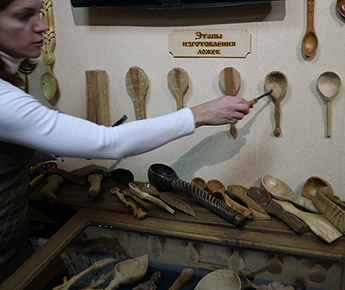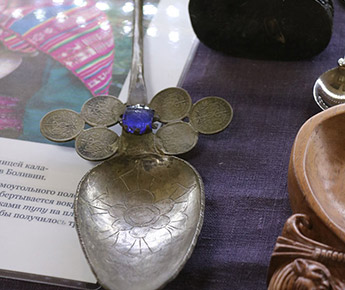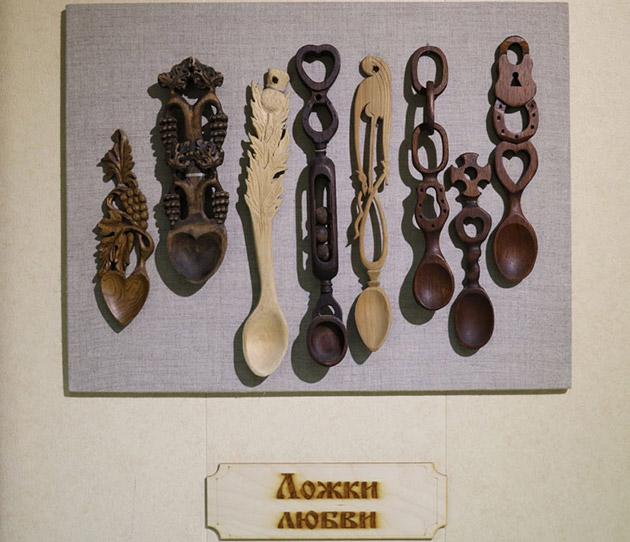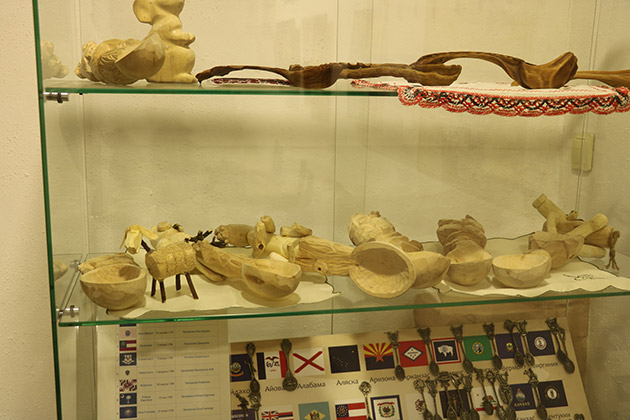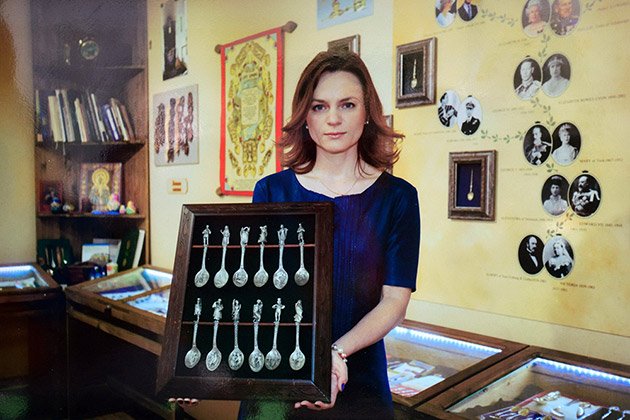The trail of history in Vladimir Museum of Spoon...
Vladimir community is justifiably proud of its founder, Vladimir the Great, being the first ruler who ordered to employ tablespoons. The 10th century saw a Cutlery Decree, and a set of silver spoons was ordered for the troop, therefore marking the beginning of the history of the Russian spoon. Globally it takes its start in the Ancient Egypt. Archaeologists used to discover spoon-like items in pharaohs' tombs next to toiletries, such as combs, mirrors etc. Most likely, they were used to mix or store certain components.
A spoon has a history comparable to ancient cathedrals or books, and it is more than mere tableware or an interesting souvenir. Vladimir Museum of Spoon, a private collection of Tatyana Pikunova, who has been packing it for over 25 years, includes over 15.000 items. Step by step, a simple private collection grew into a valuable museum, a small island of culture where every exhibit has its history and unlocks a fresh look on this seemingly casual object. The Museum aims to demonstrate that spoons carry a different message rather than being servants of eating occasions, and can be multifunctional.
The Museum opened its doors on June 12, 2015, and since then has been studying traditions and customs of various countries and nations, gathering data of the role Vladimir played in spoon making industry, and narrating of its great contribution to it. The permanent exhibition features approximately 3000 spoons of all sizes, and can introduce its history, as well as various production methods and techniques, a plenty of beliefs and legends.
The Museum holds spoons from different countries and eras, many of them being rare or even unique items. The most interesting examples are the Great Britain Monarchs' Coronation Spoons, the Pre-Revolutionary Silverware of Russia, Nicholas Gish's Tin Items, the Silverware of the U.S., or the Silverware of Russia – Decent Successors. Another unusual exhibit is the smallest spoon in the world, a three millimetre item made of 92.5% pure silver, and the spoon itself is a mere one millimetre in size.
Manufacturing companies used to make interesting and uniquely numbered sets for their customers as a Christmas gift. An impressive thematic selection of tin spoons is also on display – the Birds of the World, the Ded Morozes of the World, the Dutch Mills, the Gardens of the World, the Problems of the Dreaming Generation, the Tales of the World, and many more. A leaflet with detailed descriptions of every character or scene depicted on the spoons, used to accompany these sets as every ornament was custom made.
A map of sort, made of souvenir spoons, reveals its wide geography and is designed to show how the souvenirs reflect the symbols of every country. Pomegranate definitely stands for Armenia, amber – for Latvia, two spoons refer to Russia since it presents itself both in Europe and Asia: one of them depicts Vladimir, Saint Petersburg and Moscow, and another one – Vladivostok. There are also spoons depicting the most bright events or personalities, which also emerge associative images of the countries.
Spoon plays a special role in Great Britain where a coronation spoon was made as a souvenir for those attending the coronation ceremony. This tradition to anoint the rulers has been known in England since the 18th century and remains even today. The family tree of royalties with examples of coronation spoons serves a proof to that.
Other specialties in the collection are the items from the Windsors' and the Romanovs' collections, the Faberge's spoon, Russian mosaics spoons, silver enamelled and nielled silver spoons, tableware for the White House, and the apostolic spoons. A renowned post-revolutionary porcelain factory in Kolchugino used to produce a wide range of so called consumer grade goods – all sorts of items for table setting.
The collection features enamelled spoons made in all sorts of techniques, designated spoons, such as the spoons for grapefruit, nuts, berries, unwrapped sweets, cut tomatoes, jelly etc. Some other “dedicated” examples can be seen – the one with a special edge for moustachioed gentlemen, a perforated spoon for slimmers, or a castor oil spoon with a clamp to protect from the unpleasant smell.
One of the stands reveals the process of making a wooden spoon and elements of folk ornaments. The spoon involves many fun facts and exciting stories – here are just some of them. For example, an ear pick was not only a prototype of a cotton bud, but a charm decorated with mythical symbols. According to the locals, such ear picks were in daily use by their grandparents, or in the Soviet period.
Tupu spoons, popular in Peru and Bolivia, were used as a shawl pin. Some spoons were double purpose: a sharpened pointed end served some practical use, while a flat surface on the other end acted as a frying pan. It takes only 11 minutes to make a spoon. The process of making base items, or chip of woods, evoked a figurative expression of idling around.
There is a tradition in Wales, dating back to the 17th century, where every young man had to make a spoon from a block of wood for his beloved. The number of depicted rings indicated the desired number of children. If accepted, this spoon of love would commence the courtship, and after marriage the family kept it and passed down through the generations.
Every exhibit is unique, and one can hardly identify the most valuable one. Tatyana Pikunova, the Museum Director, created an exhibition space but also equipped it to be interactive and accessible for all. The Museum carries out an important mission to support vision-impaired children. Workshops and themed events train them to “see” with the help of wooden dolls, while the Museum team stages short tales and plays based on specially designed models
Tatyana emphasizes that the Museum is one of a kind – there are similar museums in Russia and in other countries, yet they are either very niche, or act as a part of the state collections. For example, an exhibition of the spoon history can be found in the ethnographical museum in Perm, or the spoon of love museum in Wales. The Museum of Spoon in Vladimir astonishes with its in-depth history, and fantastic and thorough exhibition, backed by a great deal of effort and love towards the museology, rather than collecting as it is. Deep inside every museum worker is a keeper of the Russian history and culture, and these efforts have to be supported and valued. We wish the Museum and its team all the best in the future and all sorts of endeavours!
When there are no words left, the meaning is still preserved.
